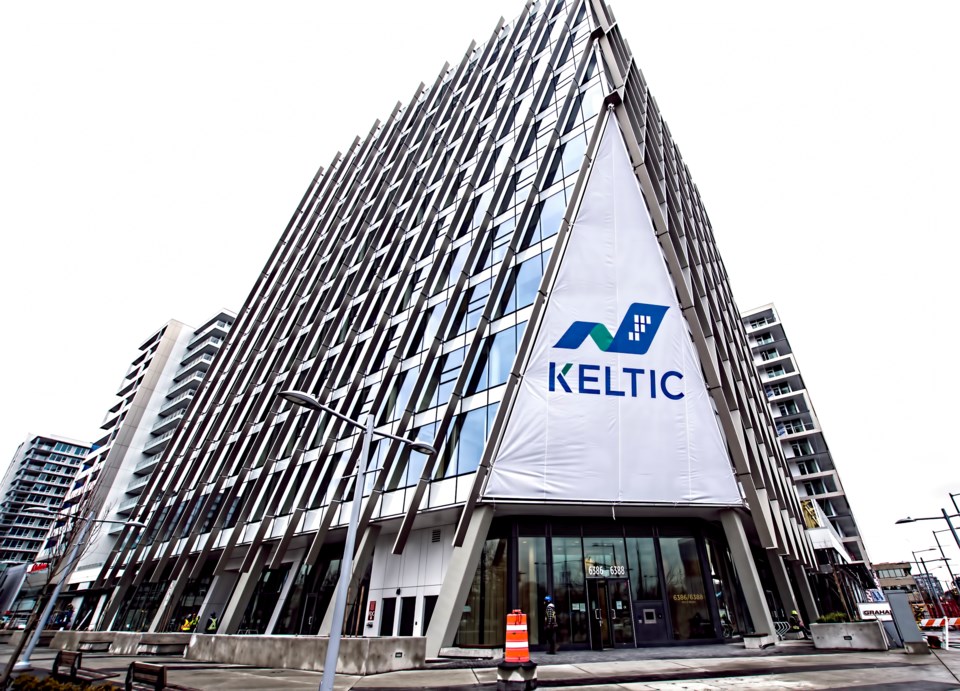In Western Canada cities it is the suburbs that are seeing a reduction in office vacancies, and it is more than lower prices and free parking that is driving the exodus from downtown.
Many say the flight is a reaction to the scary elephant in the room.
In Metro Vancouver the office vacancy rate downtown increased to 12.3 per cent in the second quarter, with the close-in Yaletown, Gastown and Vancouver Broadway markets also seeing increases.
Meanwhile, vacancy rates remained the same or decreased in suburban markets such as Richmond, Surrey, New Westminster and the North Shore.
“These more affordable markets may have seemed a better option for tenants who required office space, but without a location-based premium,” said a Q2 report from Avison Young.
The suburbs also led in “deal velocity” as compared to downtown.
Richmond experienced a “burst of deals” around the Airport Executive Park complex, which has a mixture of Class A and B buildings, according to the report, while Surrey also registered a number of new office leases.
Richmond’s office vacancy rate is now 5.8 per cent and it is single digits in every suburban market of the Metro region. While downtown Vancouver posted negative absorption of more than 375,000 square feet in Q2, Richmond was positive by 72,300 square feet, Surrey had a net increase of 40,800 square feet and the North Shore, which has a 3.5 per cent vacancy rate, saw positive lease up more than 21,000 square feet. New Westminster has seen its office vacancy rate dip to a near all-time low of 4.7 per cent.
The suburban move is not restricted to Vancouver.
“Suburban office vacancy remains lower than downtown vacancy, as urban cores across Canada grapple with slow return to office, low transit ridership, and long commutes,” a Q2 Colliers national report noted.
That suburban-urban divide emerged as Colliers observed that 93 per cent of new office supply in 2023 has been in downtown markets, creating a further challenge for landlords trying to stem an exodus to suburban business parks.
In Calgary, where the downtown vacancy rate is in the 29 per cent range, it has fallen to 21 per cent in suburban markets after 377,000 square feet of absorption in Q2 2023.
Saskatoon is seeing Calgary-level office vacancies rates in its downtown business district as Class A space hit a 31.8 per cent vacancy in the second quarter, according to Cushman & Wakefield, and Class C offices were nearly 25 per cent empty.
A blow to the downtown office sector is a migration to suburban markets. Medical office tenants, in particular, are transitioning from the downtown to suburban locations throughout Saskatoon.
In Winnipeg, the downtown office vacancy rate has spiked to 17 per cent, according to CBRE, while the suburban vacancy rate has dropped to 9.7 per cent, among the lowest suburban vacancy rates in the country.
Parking availability, building access and proximity to residential neighbourhoods are the primary reasons for the movement to the suburbs, according to the official reports.
Street disorder blamed
But real estate agents on the street argue it is the failure of cities to get control of public safety that is really persuading businesses to move out.
“The issue is drugs and homeless people, “said Doug Rue of Saskatoon.
“I deal with considerable real estate in Saskatoon and Saskatchewan and have lived in Saskatoon for many years. Being very close to a lot of business people, most will agree that the drug and homeless folks and crime have left most either afraid and or very uneasy about going downtown,” Rue said in an email to Western Investor. “That is why so many have moved out and so many of us do not want and or avoid going downtown to shop and or set up our businesses there.”
Western Investor has heard similar comments across the West and every city council now has some form of plan to revitalize the downtown. But some worry it too little too late.
This July, Alberta Premier Danielle Smith said she was “astonished” how dangerous Edmonton’s downtown has become.
"It's not a safe environment when you see drug use and needles on the street," Smith said. "I've heard of a couple of business deals in Edmonton that have fallen apart because when the principals wanted to buy the building, they looked around and said, 'We will not have our female workers come out in this environment at night,' and that's not acceptable."
Alexi Hryciw, chairman of Edmonton’s Downtown Recovery Coalition, echoed both Smith and a call that is getting louder across the west.
"We've absolutely heard of investments falling through because of the state of our downtown," Hryciw told CTV News. "It's typically when investors come to our downtown and it's the social disorder that they see on that tour,” citing open illicit drug use and around transit stations, on the street and pedways.



